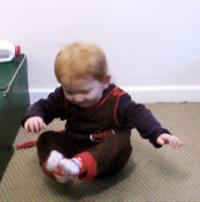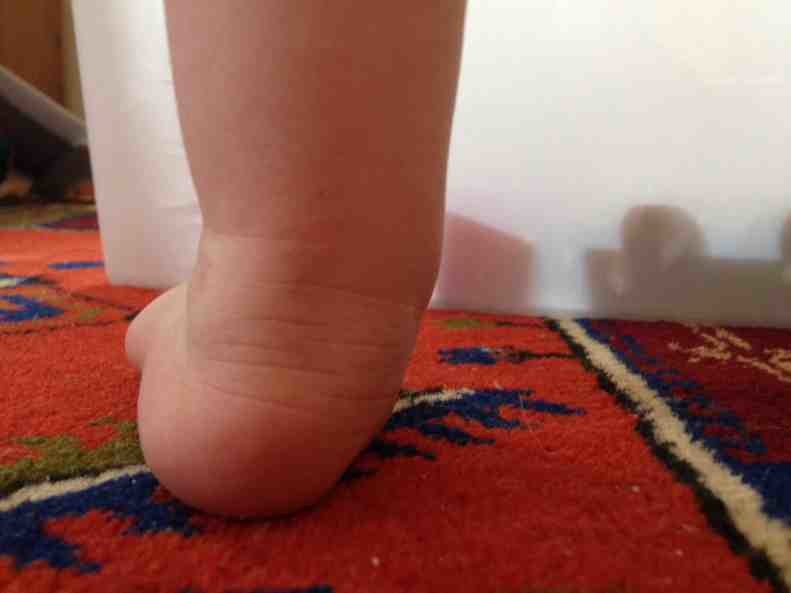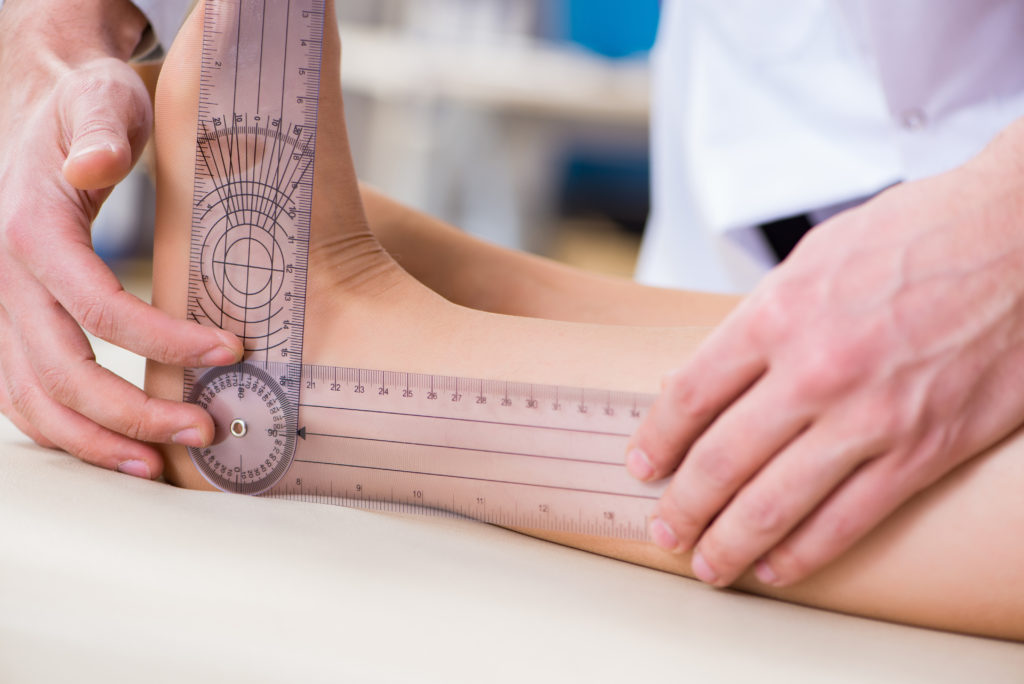hypermobility in babies ankles
But when hypermobility causes pain it. Bend a thumb backwards to touch your forearm.

My Child Is Very Flexible Is This Normal Sole Motion Podiatry
When hypermobility is identified and treated with a proper development regimen your child will report less pain improve balance strength and functional performance.
. The Beighton score is measured by adding 1 point for each of the following. Infants with joint hypermobility have joints that are able to bend further than usual and a trunk and limbs that appear to be floppy and weak. In infants with joint hypermobility the connective tissue that holds the muscles together and connects the muscles to the bones via the tendons is very pliable.
Joint hypermobility and musculoskeletal injury. If you watch these closely when the patient steps off the orthotics you can see that the angle between the lines changes as the foot returns to its unsupported state. Of these 100 children 94 met the Brighton criteria for Joint Hypermobility Syndrome and 90 met the Villefranche criteria for Ehlers-Danlos Syndrome-Hypermobility Type Of the entire cohort 50 reported experiencing ankle joint pain and 13.
Hypermobility refers to an increased range of movement in multiple joints for their age. It is extremely common in children having being reported in 25 to 50 of those younger than 10 years of age. Joint hypermobility without pain occurs when children have stretchy or flexible joints but without exercise-related pain.
Foot and ankle complaints are common in people with hypermobility. In addition your child can prevent future pain. It is sometimes referred to as being double jointed and is quite common about 1 in 10 people are hypermobile.
651-325-2200 Pediatric Expert Consult More Ways to Contact Us. 4 points and pain in 4 or more joints for at least 3 months joint hypermobility syndrome likely. Braces for the older child involved in sport soft braces to protect knees or ankles are sometimes recommended.
Many children with joint hypermobility low muscle tone have problems with flat feet. Bend a little finger back more than 90 degrees. It affects 7 10 of school age children in the UK.
This happens when the connective tissue which makes up the joint structures capsule and. You can also observe the bone below the ankle drop towards the ground. Hypermobile joints are less stable which can lead to increased sprains trips and falls.
Joint instability and injury is more common in people with joint hypermobility. For most children hypermobility affects just the joints. If you cannot make a dent with your thumb the shoe has a solid.
Hypermobility means a persons joints move beyond a normal range of motion. The inside border of the foot does not have a good arch and the heel bone is often angled outwards. This is an advantage to some children and tends to be associated with being good at sport.
Hypermobility syndrome HMS is diagnosed using the Beighton score and Brighton criteria. Joint hypermobility in babies and children is even more common and usually causes no problems. Benign hypermobility describes a child that has several joints that are more flexible than usual.
While standing put hands flat on floor while knees stay straight. Hypermobility In Babies Ankles. Generalised joint hypermobility and flat feet.
Right elbow bending backward. However some children have a condition called Joint Hypermobility Syndrome or JHS. The late Dr Barbara Ansell frequently stated that hypermobility is tricky in children.
The hypermobility syndromeHMS was first described in 1967 by Kirk et al as the occurrence of musculoskeletal symptoms in hypermobile healthy persons1. Right knee bending backward. HMS is a dominant inherited connective tissue disorder described as generalized articular.
Left elbow bending backward. Schedule a free screening with one of our pediatric physical therapists. There is hypermobility syndrome and eds but there is a very fine line between the two we all suffer in slightly differing ways.
Meanwhile other names are given to HMS such as joint hypermobility syndrome and benign hypermobility joint syndrome. As children with hypermobile joints require added support around the heel and ankle the shoes should have a closed solid and ideally high heel cap. Pains usually occur with use of the affected joints for example hand and wrist pain with long periods of hand-writing.
In addition children with flat feet often stand with their feet turned out and sometimes with the feet far apart. Pronation is very common in the hypermobile body and can cause foot leg and lumbar spine pain. The older you are the less likely it is you will be hypermobile.
Placing flat hands on the floor with straight legs. 651-290-8707 Refer a Patient. That joint hypermobility should more frequently occur in children than in adults is undoubted.
Frequent tripping or falling. Of these 100 children 94 met the Brighton criteria for Joint Hypermobility Syndrome and 90 met the Villefranche criteria for Ehlers-Danlos Syndrome-Hypermobility Type Of the entire cohort 50 reported experiencing ankle joint pain and 13. One way to check if the heel cap is solid is by pressing your thumb against the back of the shoe approximately 1 cm above the sole.
Hypermobility can be a common source of joint or muscle complaints causing fatigue pain and. In addition to hypermobile joints a child with JHS may also have. When you have joint hypermobility it means your joints are more flexible than in other people.
Children who have hypermobility disorder might experience it in one or more joints and might say they have loose joints or describe. As she got older she would sit in the w position and sleep with her legs in the same position shes now 7 and has problems running her feet ankles and hips are turning and we only got a dx of hypermobility a month ago as the GP would not listen to me shes now waiting for physio and insoles for her shoes shes also having OT weekly. This is normally attributed to the stabilization of joint collagen that occurs as a result of increased cross-linking between adjacent molecules as disulphide.
HSDs are the diagnosis where the main or only symptoms are exercise-related pain together with joint hypermobility. The increased range of movement at the joints sometimes called joint laxity or being double jointed is due to differences in the connective tissue that forms the joint capsule and ligaments. As children with hypermobile joints require added support around the heel and ankle the shoes should have a.
This happens when the connective tissue which makes up the joint structures capsule and ligaments is more compliant easier to stretch than usual. People with hypermobility syndromes are more prone to sprains and strains and may have more pain than other people. Left knee bending backward.
The knee ankle and shoulder are the most commonly affected joints in children. 4 points hypermobility likely. 53 girls and 47 boys mean age 11531yrs with a mean Beighton score of 679 and LLAS of 8212 were recruited.
Joint hypermobility in babies and children is even more common and usually causes no problems. Often this pain is prominent in the legs and feet but can affect any part of the body. Most people with hypermobility will not find a genetic cause but early identification means that steps can be taken to minimise injury.
Hypermobility Late Walking Deals 56 Off Www Ingeniovirtual Com

How To Recognise Joint Hypermobility In Your Child My Strong Little Body

What Is Hypermobility In Babies Children Young Adults Therapy Stars

How Hypermobility And Low Muscle Tone Affect Your Infant S Development Low Muscle Tone Pediatric Physical Therapy Muscle Tone

How Hypermobility And Low Muscle Tone Affect Your Baby S Development Skills For Action
Hypermobility Syndromes Children Arthritis Australia

Flat Feet Not Just A Foot Problem Skills For Action

How Hypermobility And Low Muscle Tone Affect Your Baby S Development Skills For Action

Hypermobility Syndrome Therapies For Kids

Could My Baby Have Hypermobility
Hypermobility Late Walking Deals 56 Off Www Ingeniovirtual Com
Hypermobility Late Walking Deals 56 Off Www Ingeniovirtual Com

Pediatric Hypermobility And Physical Therapy Dinosaur Physical Therapy

Hypermobility In Children The Real Deal Youtube

Joint Hypermobility Kids Adults My Footdr

What Is Hypermobility In Babies Children Young Adults Therapy Stars

Hypotonia Why Milestones Are Harder For My Third Baby Cando Kiddo Hypotonia Hypotonia Baby Pediatric Physical Therapy
